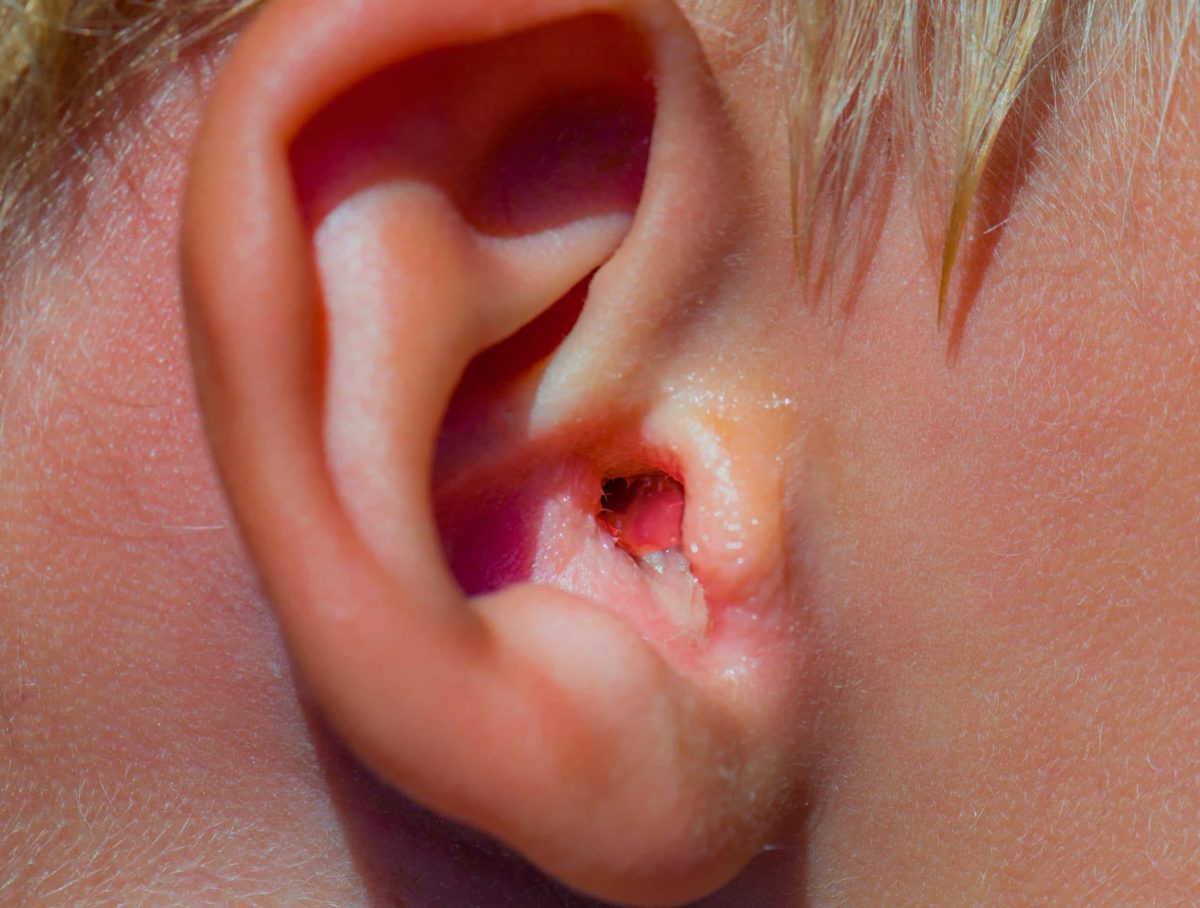If you swim regularly or have even noticed issues with your ears after swimming for the first time in a while, you may have what is known as ‘swimmer’s ear’. Interestingly, swimmer’s ear isn’t only caused by swimming; its medical name is ‘otitis externa’ and it has a range of causes, with swimming being the most common. Although anyone can suffer from swimmer’s ear, it is most commonly found in children.
If you’re worried about an infection in your ear, or your child’s ear being passed on to others, don’t worry, swimmer’s ear cannot be transmitted from one person to another.
What is swimmer’s ear?
Swimmer’s ear (otitis external), is a bacterial infection that occurs as a result of water collecting in the outer ear canal. If water collects in the ear canal, bacteria are able to grow and cause the ear to become infected.
How does swimmer’s ear occur?
Although swimming is the main cause of swimmer’s ear, it can also occur as a result of trauma in the ear canal. The ear canal is lined with a thin layer of skin that can be damaged easily by foreign objects entering the ear, such as fingers, cotton swabs, hairpins or even by using earbuds to listen to music. It’s important to remember that anything entering the ear canal could cause damage to it and result in an infection.
Aside from objects entering the ear canal, swimmer’s ear can also be a result of a sensitivity reaction to a certain product. This could be, for example, hair products such as shampoos, conditioners, masks or sprays that may cause allergic reactions and lead to skin conditions that can end in the infection. Certain jewellery may also be to blame for infection in the ear canal due to allergic reactions to the metals used.
How do I know if I have it?
Although you should visit your GP if you suspect you have swimmer’s ear, there are certain symptoms that are common with the condition. These include redness inside the ear, leakage of clear fluid from the ear canal, itching, or discomfort that becomes worse if you push on your tragus. If you have any of these symptoms, you may have swimmer’s ear in its mildest form, so intervention from a GP can prevent the condition from worsening.
As the infection progresses, symptoms worsen. Many people experience an increase in pain and itching, further fluid draining from the ear canal and further redness in the ear. You may also start to experience changes in your hearing, where sounds become muffled or it becomes more difficult to hear clearly. Additionally, the ear may feel “full” and as if there is something inside the canal blocking it.
Swimmer’s ear can progress into a more advanced infection and may need emergency treatment. If you experience a fever or severe pain, then you should seek emergency treatment immediately. Advanced progression of the infection can result in a fever, severe pain, redness and swelling travelling to the outer ear and also cause the lymph nodes in the neck to swell. Advanced progression can also lead to a complete blockage of the ear canal and pain that may radiate further afield to the face or neck.
How to prevent getting swimmer’s ear
If you want to prevent swimmer’s ear, there are some steps you can take. These include drying your ears properly after showering or swimming with a towel, but not putting the towel (or anything else) into the ear canal.
If you swim regularly, it is a good idea to invest in equipment such as a swim cap and/or swimming earplugs to prevent water from entering the ear. After showering or leaving a swimming pool, you should tilt your head side to side to allow the ears to naturally release any water that has entered the ear canals. If you are unable to release the water by using this method and are sure that there is excess moisture in your ear, using a hairdryer on a low fan and heat setting can help to dry this.
You should always avoid removing earwax from your ears with cotton buds, pencils, hair clips or anything else. Wax protects the ear canals and removing this can cause damage. If you are concerned that you have an excess build-up of earwax, then you should visit a GP or ENT and get this professionally removed.
Problems that can occur from swimmer’s ear
Although swimmer’s ear is usually not serious if you seek medical advice and treatment, there are some complications that can arise in severe cases. This can include cellulitis, a deep tissue infection that affects connective tissue and deep layers of skin. Some individuals may also experience chronic otitis externa, which means that swimmer’s ear may last for three months or longer.
In extreme cases, swimmer’s ear can lead to a potentially life-threatening condition. Although rare, it can result in skull base osteomyelitis, a condition that may occur if the infection spreads to the cartilage of the outer ear and the bones that are at the base of the skull. If skull base osteomyelitis advances, the infection can spread to the brain and can be life-threatening. It’s important to remember that this is very rare, but certain people may be at risk of it. These include those with compromised immune systems, diabetics and the elderly.
Treatment of swimmer’s ear
In most cases, swimmer’s ear is easily treated after a visit to an ENT. A doctor will normally prescribe eardrops that may have different ingredients to target the main cause of your swimmer’s ear. You may need eardrops containing steroids or antibiotics to combat the infection or antifungal medication if the doctor believes that it is caused by a fungal infection. In some instances, you may need eardrops that contain chemicals that will help to restore the ear canal.
Depending on your specific case of swimmer’s ear, the doctor may also need to clear any blockages from your ear before recommending the use of eardrops or other medication.






